When are ribs done? Discover multiple easy and effective methods to ensure that your BBQ ribs are perfectly done.
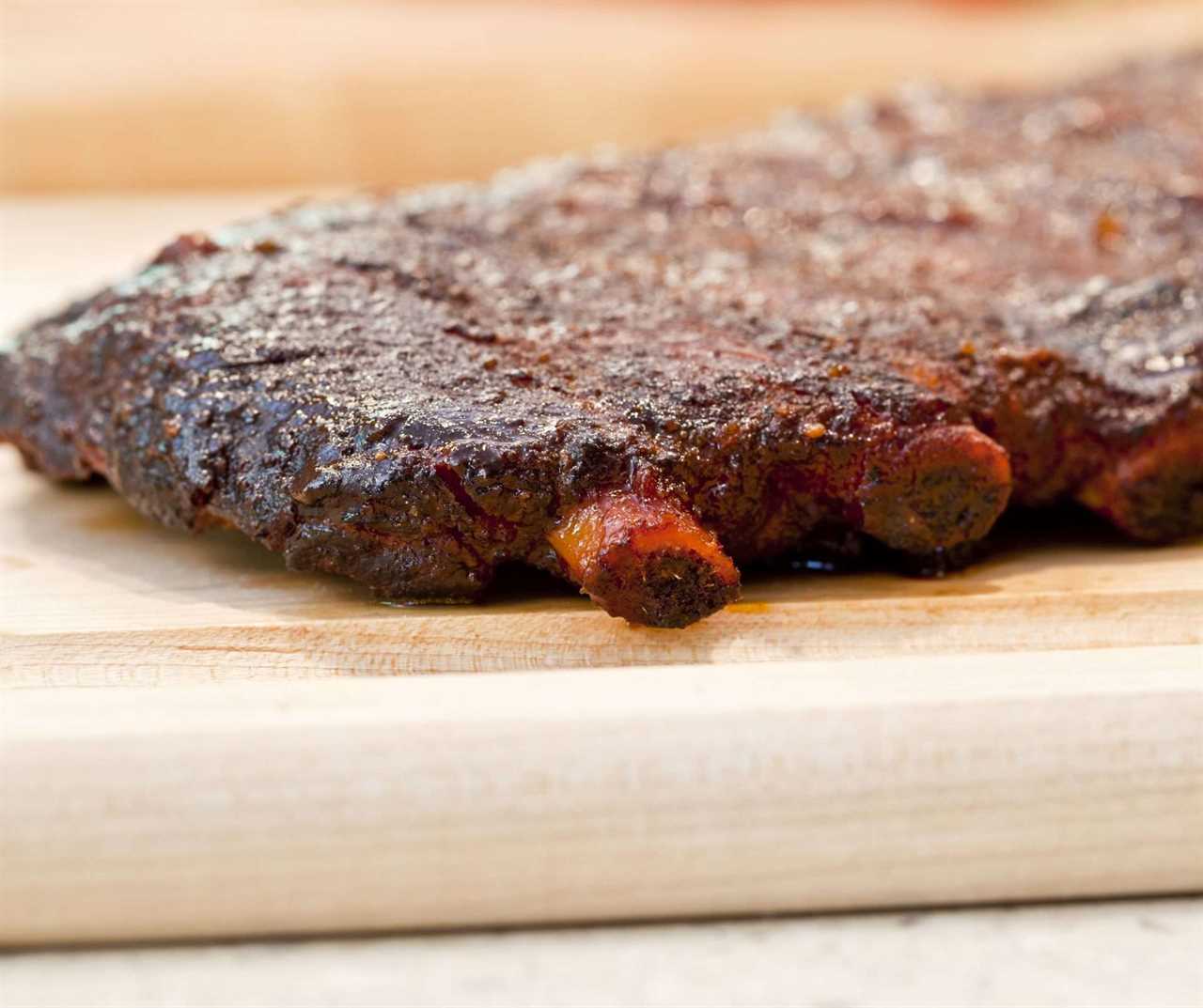
You can’t judge good ribs by temperature alone. While the internal temperature of the pork and beef ribs are essential, the color and texture are just as vital. Of course, the level of doneness depends on how you cook them and what you intend to do with them. The first question is, how do you like your ribs? Competition tender? Fall of the bone? The choice is yours. So, let’s find out how to tell when ribs have cooked to your preferred doneness.
When are Pork Ribs Done
According to the USDA, pork is cooked at a minimum temperature of 145°F (63°C). The key word here is minimum. You can safely eat pork at 145 degrees F., but they won’t be tender. Barbecued ribs are cooked to a much higher internal temperature. That is the secret to tender rib meat and the distinction between “done” and “finished.”
Done versus Finished
If the USDA guideline is merely a guideline, so are the arbitrary numbers you find on the internet. There’s a saying that with barbecue, the meat will let you know when it’s finished. That doesn’t mean that temperature isn’t important. Internal temperatures between 195°F and 203°F (90°C to 95°C) are a good place to start. The only issue? How do we measure the internal temperature of a slab of meat filled with bones?
Why You Should Cook Ribs Passed “Done.”
According to official standards, “done” means safe to eat, but that doesn’t always mean it’s cooked to the desired doneness temperature. For example, if you like your steak medium-rare, it’s not cooked to meet safety standards. But when you cook them low and slow until they reach an internal temperature of 200°F, the meat will absorb smoke flavor. The tough cartilage and collagen will break down, resulting in tender meat with sugar, gelatin, and water production.
Can You Overcook Pork Ribs?
Can pork ribs be overcooked? Yes and no. Think about it this way. You can cook meat to extreme temperatures if you live off the USDA guidelines. The truth is that they can be cooked at a wide range of temperatures. Some methods call for very high internal temps. But as long as the meat is tender and moist, it is perfect regardless of the temperature (provided it is safe).
Checking the Internal Temp
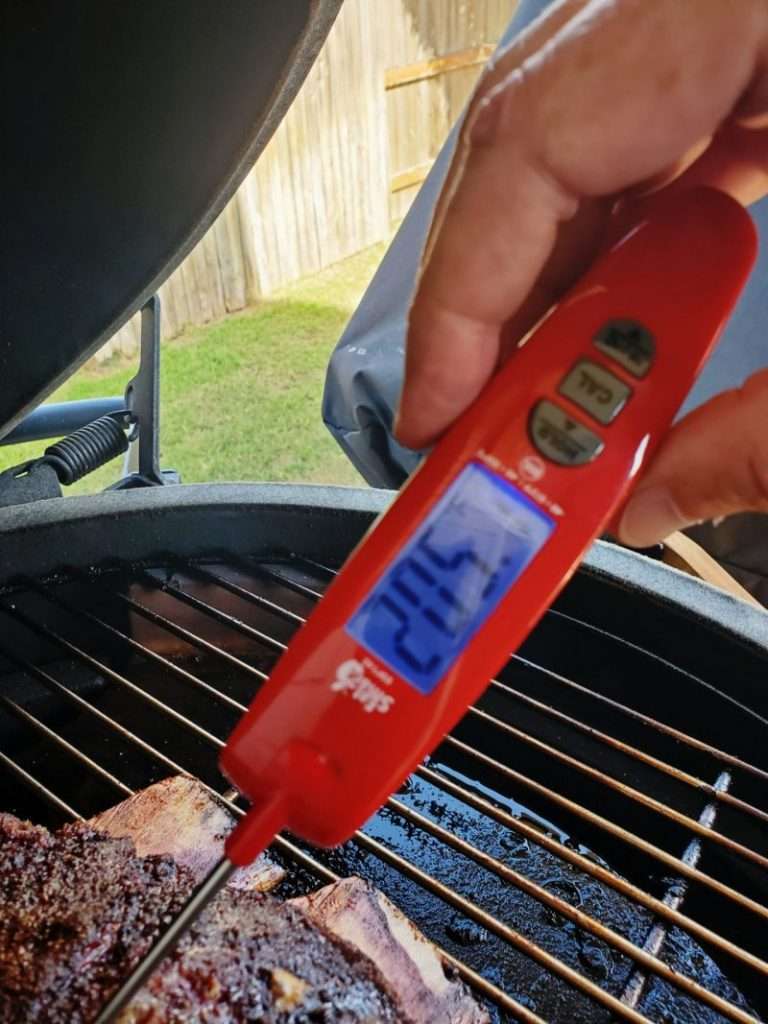
Barbecue is about the look and the feel of the meat. While a temperature probe or instant-read thermometer are useful tools, they are just tools. There are several ways to test ribs for doneness, and I recommend using a combination of techniques.
Temp Checking
Rib meat can be less than an inch thick and about a half-inch wide. Bone and fat also heat differently than meat. Finding the right place to get an accurate measurement can be challenging. For this reason, it is important to test between each bone, particularly in the middle of the rack. Doing this will help you determine proper doneness.
Ribs Bend Test
A raw rack of pork ribs will easily fold in half. The meat is loose and flexible. As it cooks, the meat contracts, and the rack becomes rigid. As the internal temperature of the ribs starts moving above 190°F, the meat breaks down, and the rack loosens. If you lift it with a pair of tongs in the center of the rack, it will bend, and the crust will crack. A fully cooked rack should bend into a U shape. If they are overcooked, the rack will break.
Shrinkage Around the Bone
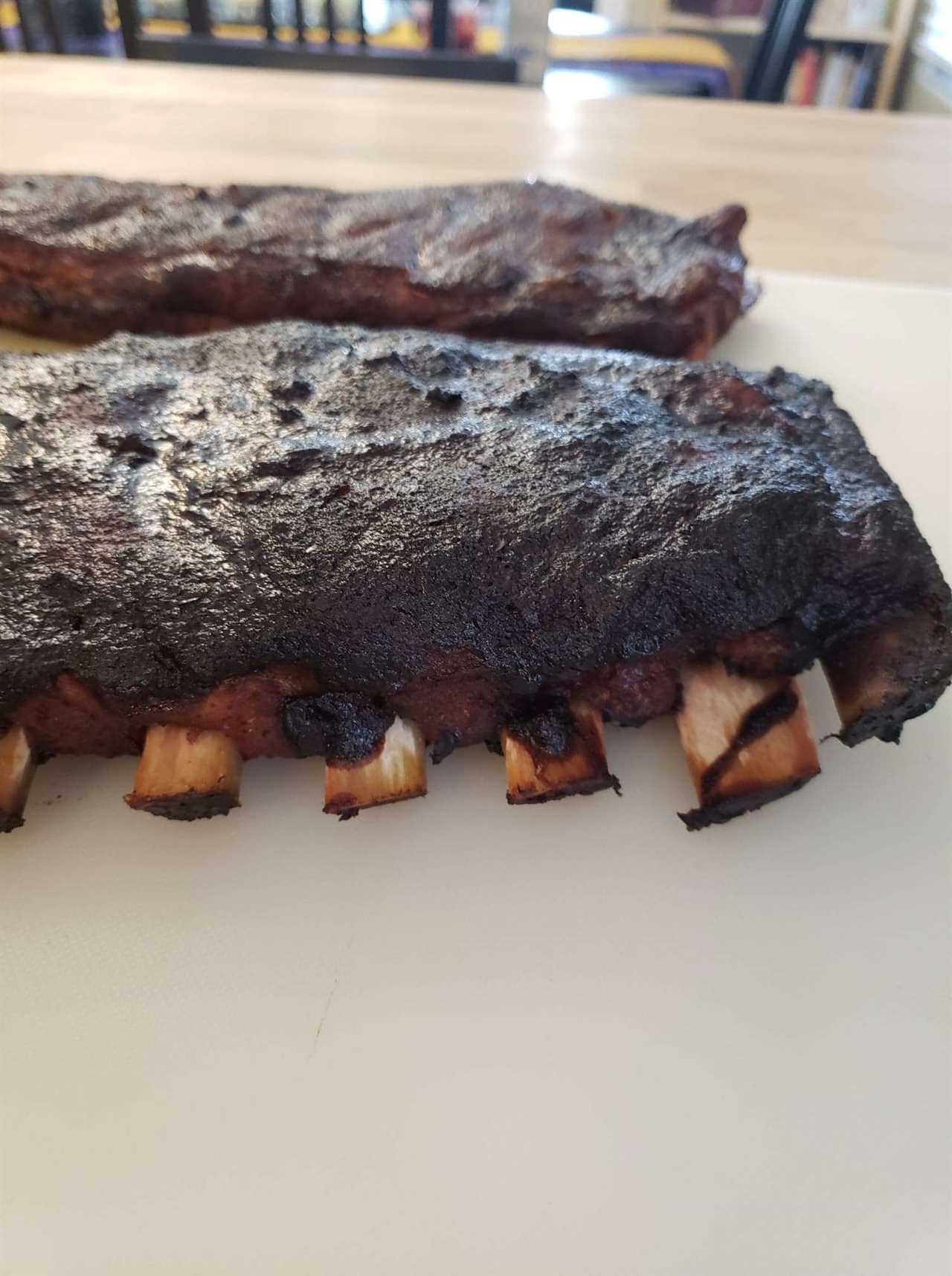
As meat cooks, it shrinks due to water loss. As this happens, the meat will pull back from the tips of the bones. Depending on the type of ribs and the level of doneness, this can be anywhere from a quarter inch to nearly an inch (with large beef ribs, it will be more). Consider this a sign of how well they are cooked.
Twist Test
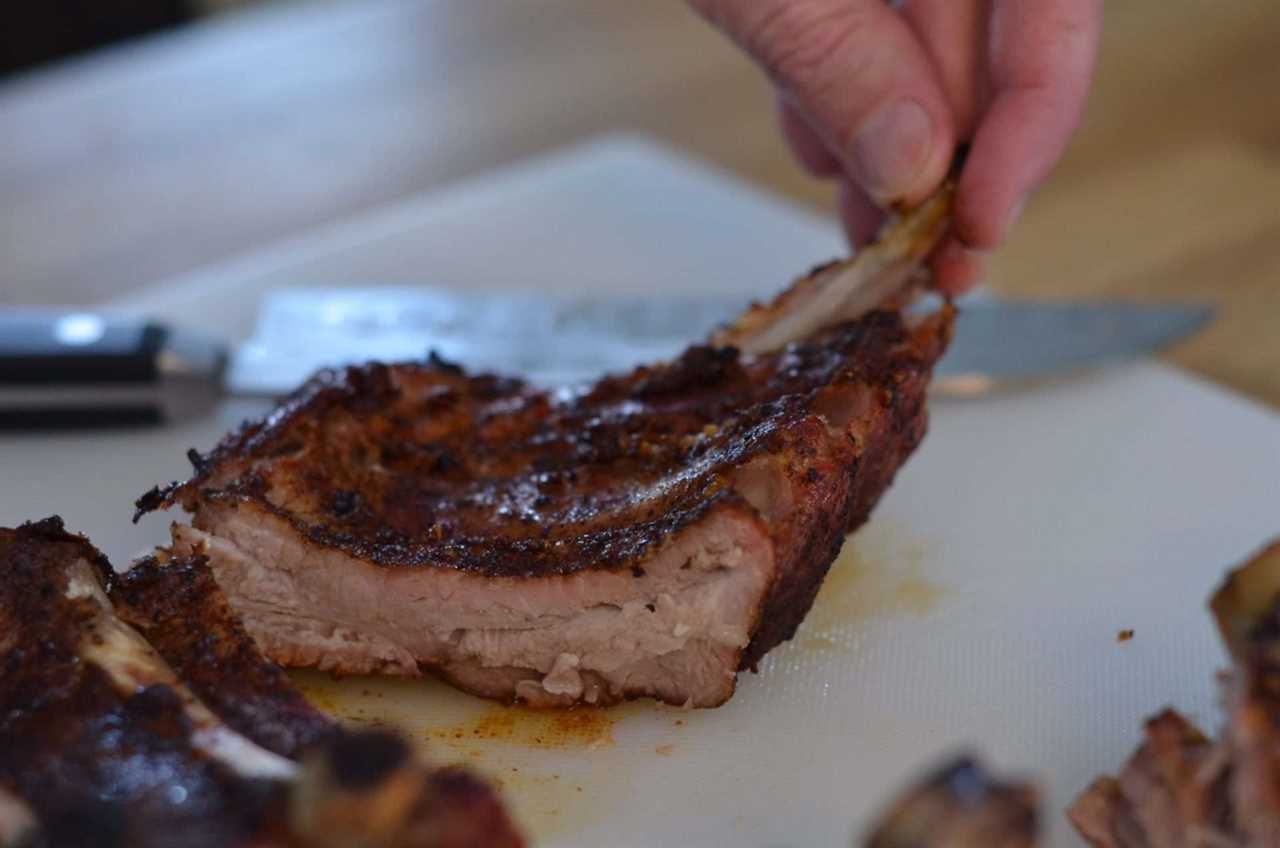
derrickriches.com
Slow-cooking ribs causes the bones to harden and dry. Also, the connective tissues that hold the meat to the bone start to break down. As this happens, the bones become loose. If you enjoy fall-off-the-bone ribs, they are ready as soon as you can slide the bones out of the rack. If you want to keep the meat on the bone, give the bones a light twist. They should move slightly. Since the meat has pulled back from the bone, you can get a hold of the end and twist it.
Poke Test
The testing methods above rely on textural changes in the meat as it cooks. Another way to get a feel for this is by poking the meat with something sharp. Poke the meat with a skewer, a toothpick, or the probe of your meat thermometer. It should pierce easily with little resistance. If this is the case, the ribs are done. This method is known as the toothpick test.
Experience
Any of the tests above will help you achieve tender grilled or smoked ribs. Not only will it help you improve your technique, but it will teach you what to look for. Experienced pitmasters rarely require meat thermometers and don’t need to poke, twist, and bend their BBQ ribs. They know by color, smell, and feel. With experience, you, too, can reach this level of expertise.
Pork Ribs Internal Temp Chart
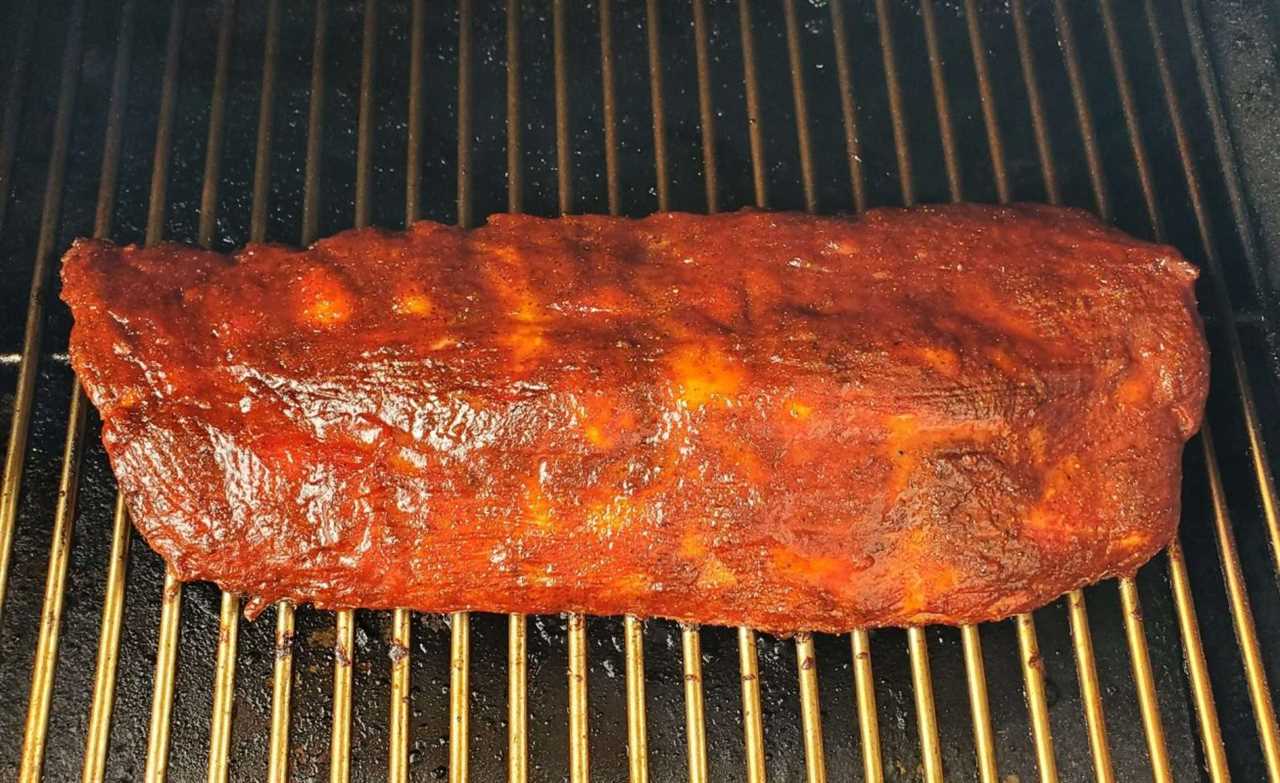
The temperatures below are a guide. Use them accordingly. The important part is to cook a rack of ribs that you and loved ones will enjoy.
| Ribs by Type | Smoking Temp | Target Temp |
| Spare Ribs (St. Louis) | 225°F | 195° to 203°F |
| Baby Back Ribs | 225°F | 190° to 195°F |
| Country Style Pork Ribs | 250°F | 145° to 155°F |
| Beef Back Ribs | 225°F | 190° to 195°F |
| Beef Short Ribs (Plate) | 225°F | 195° to 200°F |
| Country Style Ribs (Beef) | 250°F | 175° to 180°F |
Wrapping, The Stall, and Fixing Bad Ribs
There are hundreds of secrets for preparing phenomenal ribs, and most are gimmicky at best. However, you can do a few things to ensure tender, moist, and flavorful BBQ ribs.
Membrane (silver skin)
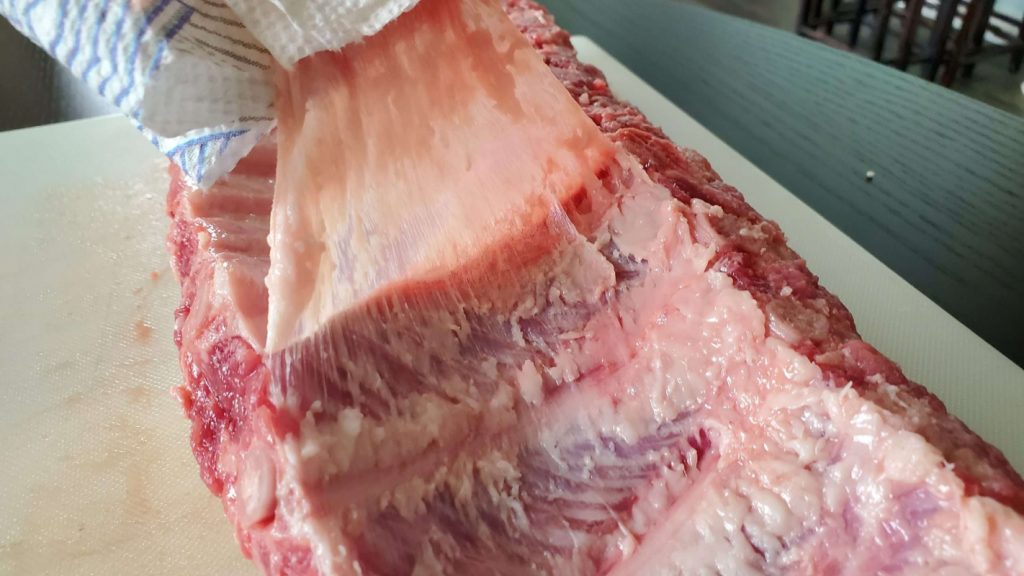
Almost all BBQ aficionados remove the membrane from the underside of the ribs. This is especially important for tender pork spare ribs (St. Louis cut) or baby backs. To remove the membrane, lay the rack bone side up. With a blunt instrument like a butter knife, lift the membrane away from the bone in the center. Slide the knife upward along the bone, and work your fingers underneath. Use a paper towel to grip it, and pull the membrane away and off from the bones.
Rubs
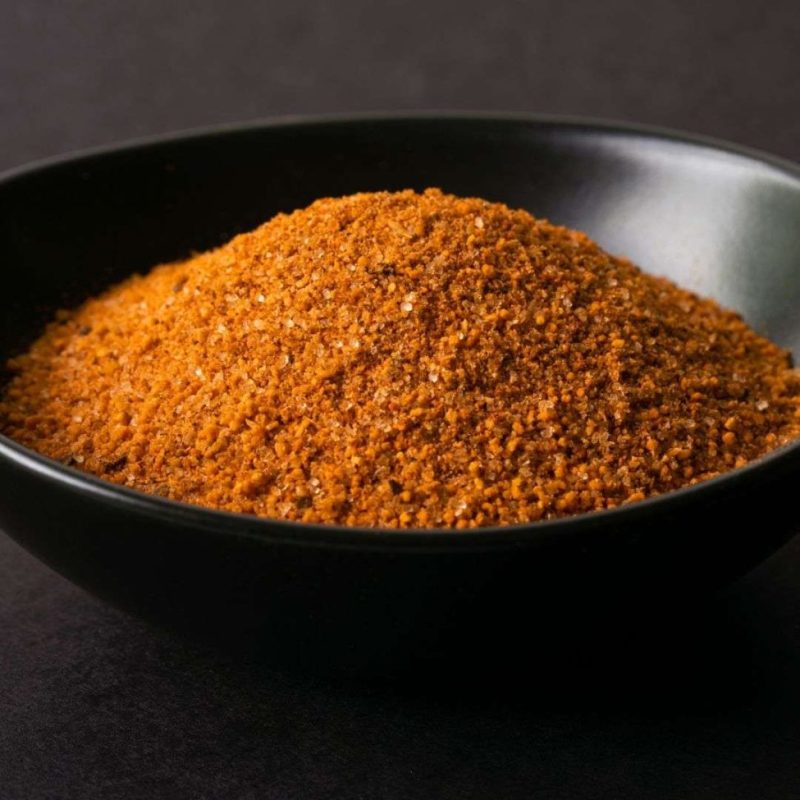
BBQ rubs provide delicious flavor and a deep rich color. This is why you see paprika added to rubs. It has a nice red hue that adds beauty to the bark. A mustard binder will provide color from the turmeric. The salt in your rub absorbs moisture from the meat and helps hold it in place. Sugar, mainly dark brown sugar, will caramelize on the meat’s surface, adding both color and a subtle sweet flavor.
Wrapping
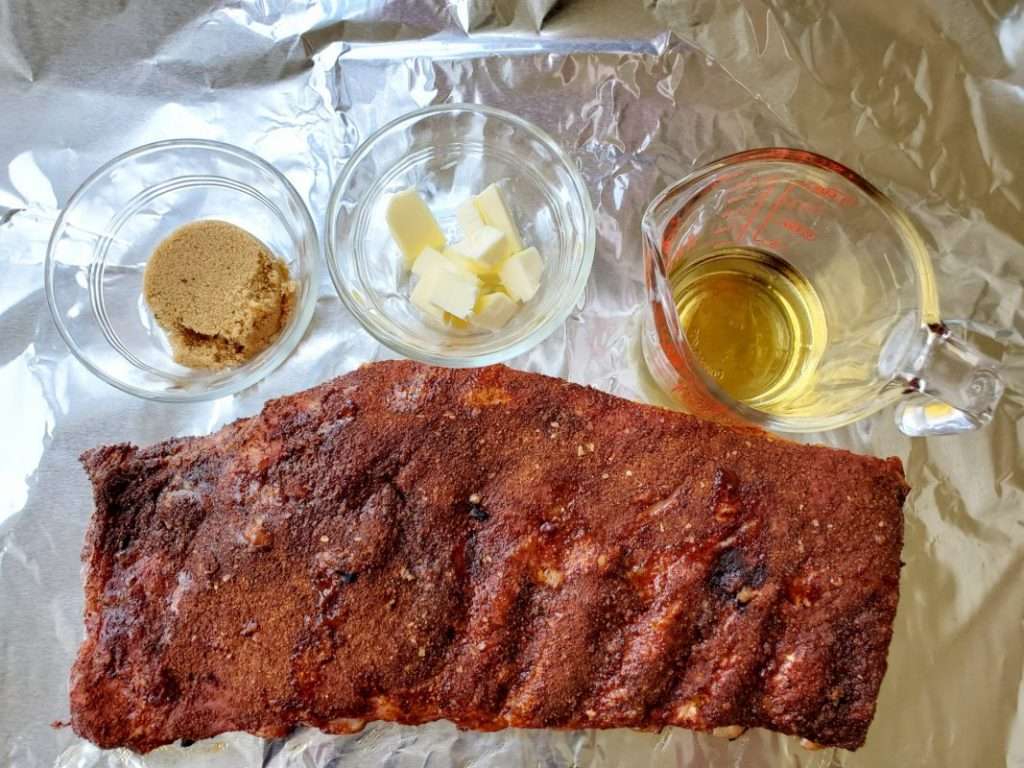
Wrapping ribs is an old pitmaster trick. It holds in heat and moisture and helps the meat stay nice and tender. Known as the “Texas Crutch,” the wrapping method is standard for most recipes. The ribs are enclosed in aluminum foil to retain moisture and produce a tender, ‘steamed’ rib. You can also wrap them with pink butcher paper, which produces less moisture and keeps the bark intact. Though wrapping will keep them from drying out, it can also block out smoke flavor, particularly when using foil.
The Stall
Let’s say you’ve put a rack of ribs on the grill, smoker, or in the oven to cook. The temperature rises slowly but consistently. Then, around 150°F, the temperature stops going up. It can hold steady for an hour sometimes. This is referred to as ‘the stall,’ and despite what some might say, it is not your enemy. It is during this cooking time that the magic happens. Collagen breaks down, and the meat becomes tender even though the cooking seems to stop. Monitor the stall, but don’t worry about it. Let the process naturally progress, and the temperature will rise quickly afterward.
Tough Ribs
Tough ribs are undercooked. They will fail the bend, twist, and poke tests listed above. If the internal temp is above 200°F and they still seem tough, remove them from the cooker, wrap them tightly in foil, and place them in a warm place to rest for at least 30 minutes. I wrap them in foil, cover them with a clean towel and place them in a cooler to keep warm. They will increase in tenderness as they rest.
Dry Ribs
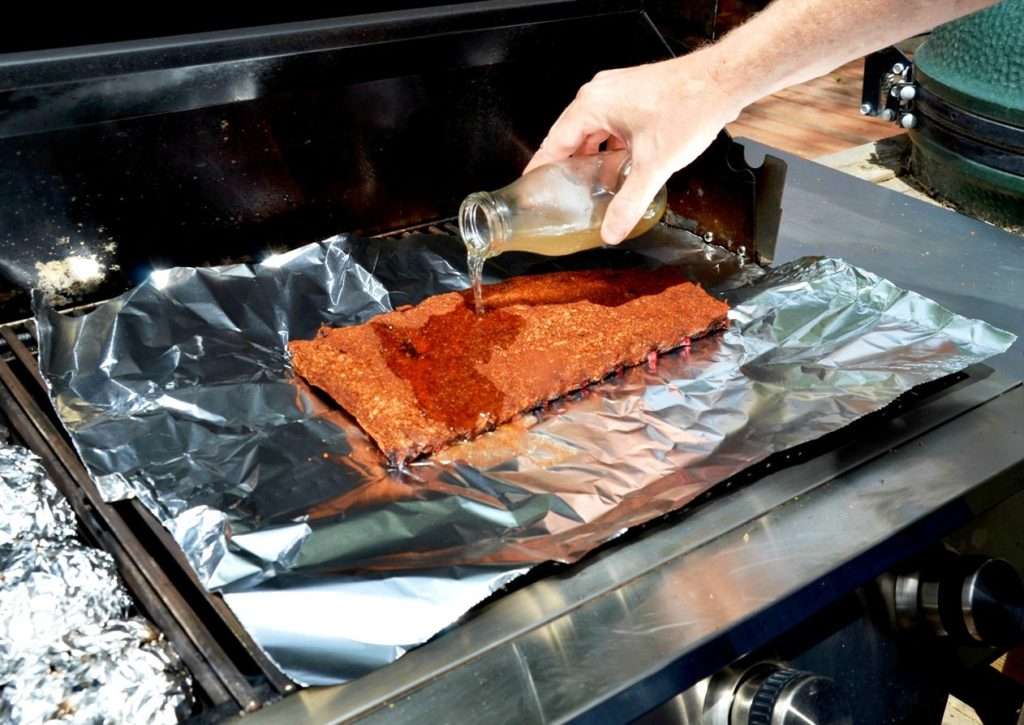
Dry ribs have cooked for too long but aren’t necessarily overcooked. They’ve just spent too much time in a dry, hot environment. Wrapping will solve this. If they hit the optimal internal temperature but are still dry, it’s time to wrap them. Adding moisture with a 1/4 cup of warmed apple juice in the foil packet will work wonders. Again, keep them warm (but not heated) in the wrapping for 30 minutes. Also, dry meat is why barbecue sauce was invented.
Beef Rib Doneness
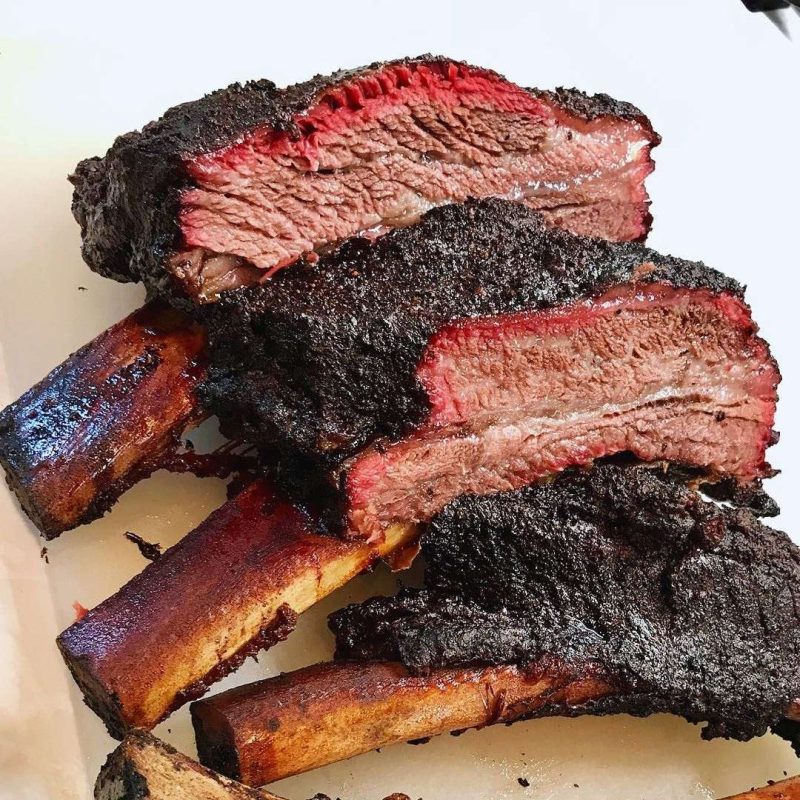
There are two types of beef ribs. The first is beef back, which are mostly bone, with the bulk of meat in between. Beef back ribs cook similarly to baby back pork ribs. That makes them harder to temp check, so they need to be tested more by feel than by any number on your digital thermometer. A rack of beef plate ribs has a thick layer of meat on top and is cooked like brisket. These are easier to monitor than beef back ribs. Test the temperature in the thickest part of the meat to determine doneness.
More guides
The post When are Ribs Done? appeared first on BBQ & Grilling with Derrick Riches.
Did you miss our previous article...
https://manstuffnews.com/backyard-grilling/the-best-method-for-smoked-picanha
 Backyard GrillingWeekend WarriorsAdvice from DadBeard GroomingTV Shows for Guys4x4 Off-Road CarsMens FashionSports NewsAncient Archeology World NewsPrivacy PolicyTerms And Conditions
Backyard GrillingWeekend WarriorsAdvice from DadBeard GroomingTV Shows for Guys4x4 Off-Road CarsMens FashionSports NewsAncient Archeology World NewsPrivacy PolicyTerms And Conditions
